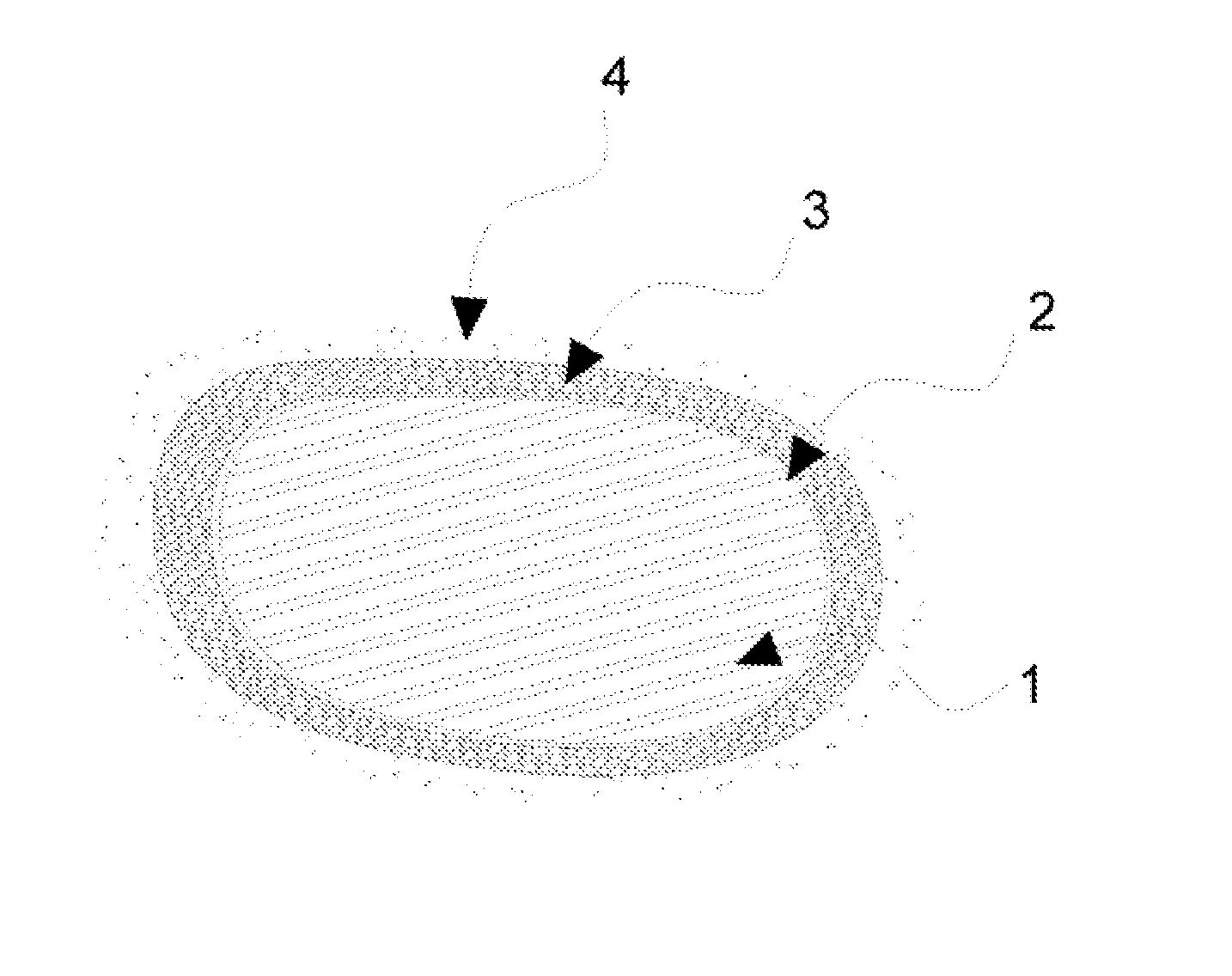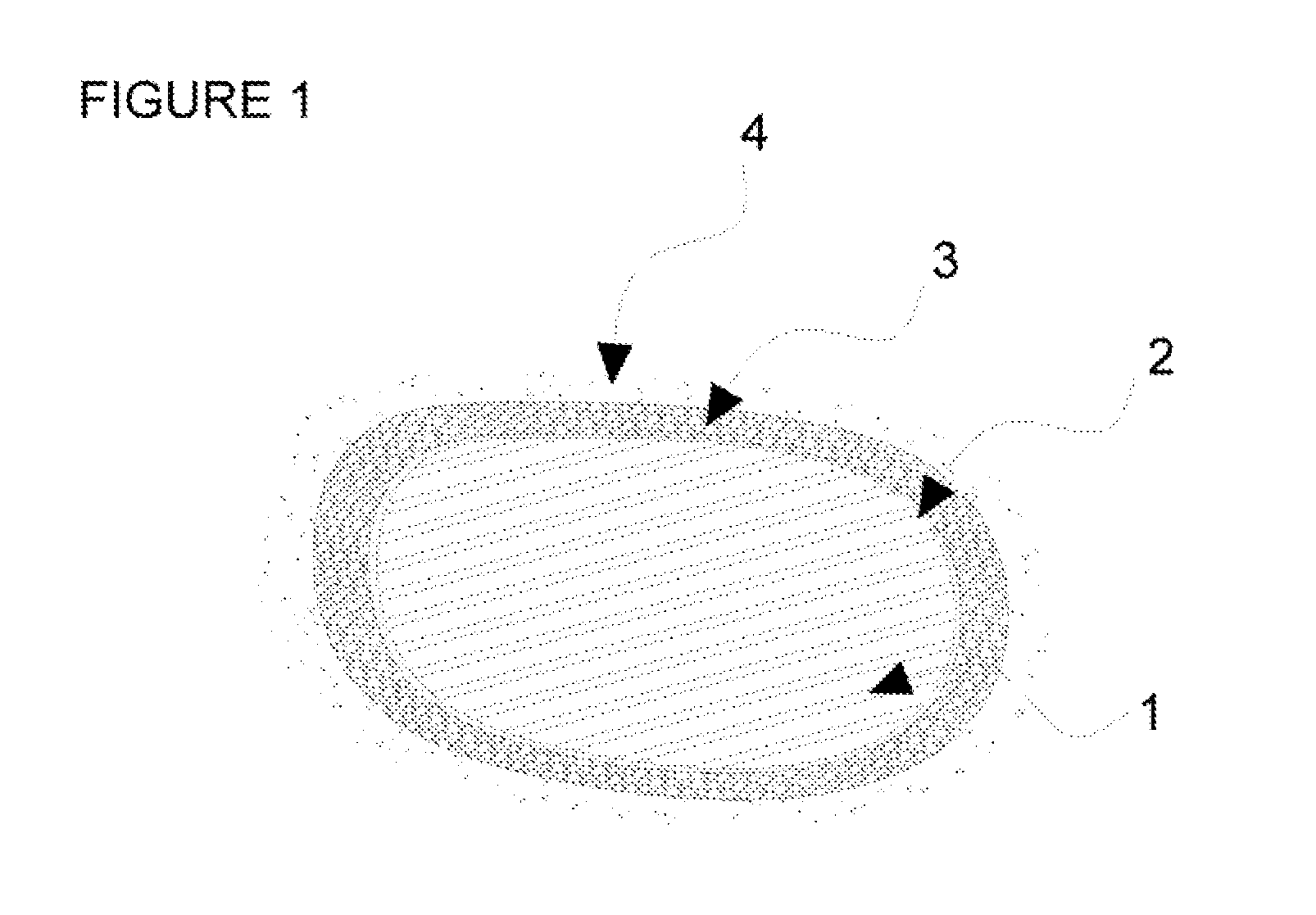Edible Anti-microbial food coating materials
a technology of food coating and antimicrobial technology, which is applied in the direction of baking products, meat/fish preservation by coating, sweetmeats, etc., can solve the problems of insufficient frying process to fully cook and kill any microbial contaminants, contamination of food surfaces, etc., and achieves the reduction or elimination of microbial contaminants, reducing the growth of microorganisms or further contamination of food, and reducing the effect of microbial populations
- Summary
- Abstract
- Description
- Claims
- Application Information
AI Technical Summary
Benefits of technology
Problems solved by technology
Method used
Image
Examples
example 1
[0033] An antimicrobial food coating material of the expanded bread crumb type was manufactured using the extrusion cooking process. This crumb was prepared by first preparing the following dry blend:
Ingredient%Wheat Flour95.0Salt1.5Dextrose1.0Whey1.0Vegetable Shortening1.0Monoglyceride0.5
[0034] In addition, a liquid blend of 15% acidulated calcium sulfate, 5.0 Normal (ACS 50, Mionix Corporation, Rocklin, Calif.) and 85% deionized water was prepared. In addition, a blend of 5.7% postassium sorbate and 94.3% deionized water was prepared. The dry blend was added to the feed hopper of a Wenger TX-52 extrusion system (Wenger Manufacturing, Inc., Sabetha, Kans.) and continuously metered into a Wenger Model 2 DDC preconditioner at a rate of 80 kg / hr. In the preconditioner, water was continuously added at about 25 kg / hr, and the previously described potassium sorbate solution was continuously added at about 52 g / min to achieve about 0.2% potassium sorbate in the products. The previously ...
example 2
[0039] An antimicrobial food coating material of the cracker meal bread crumb type was manufactured using the extrusion cooking process. This crumb was prepared by first preparing the following dry blend:
Ingredient%Wheat Flour96.0Salt4.0
[0040] In addition, a liquid blend of 15% acidulated calcium sulfate, 5.0 Normal (ACS 50, Mionix Corporation, Rocklin, Calif.) and 85% deionized water was prepared. In addition, a blend of 5.7% postassium sorbate and 94.3% deionized water was prepared. The dry blend was added to the feed hopper of a Wenger TX-52 extrusion system (Wenger Manufacturing, Inc., Sabetha, Kans.) and continuously metered into a Wenger Model 2 DDC preconditioner at a rate of 80 kg / hr. In the preconditioner, water was continuously added at about 25 kg / hr, and the previously described potassium sorbate solution was continuously added at 52 g / min to achieve about 0.2% potassium sorbate in the products. The previously described acidulated calcium sulfate solution was added at ...
example 3
[0042] A batter type food coating material was prepared by blending the ingredients in the proportions shown in the table below to create a viscous batter.
Ingredient%Wheat Flour31.0Corn Starch6.0Sodium Bicarbonate1.5Salt1.5Water60.0
[0043] The batter created by blending the Ingredients above has a pH of about 7.5 (control). Sufficient acidulated calcium sulfate, 5.0 Normal (ACS 50, Mionix Corporation, Rocklin, Calif.) was added to the control batter to create anti-microbial batters with pH levels of 4.8 and 4.2.
PUM
 Login to View More
Login to View More Abstract
Description
Claims
Application Information
 Login to View More
Login to View More - R&D
- Intellectual Property
- Life Sciences
- Materials
- Tech Scout
- Unparalleled Data Quality
- Higher Quality Content
- 60% Fewer Hallucinations
Browse by: Latest US Patents, China's latest patents, Technical Efficacy Thesaurus, Application Domain, Technology Topic, Popular Technical Reports.
© 2025 PatSnap. All rights reserved.Legal|Privacy policy|Modern Slavery Act Transparency Statement|Sitemap|About US| Contact US: help@patsnap.com


